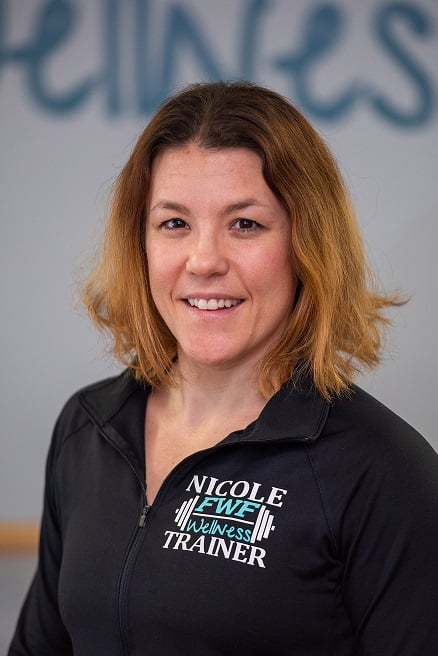While many believe the only function of a Certified Personal Trainer is to help clients lose weight and get six-pack abs, the true job of a trainer is to fix movement dysfunction and help your client adopt healthy behaviors that improve overall health.
A skilled personal trainer has many superpowers including but not limited to:
• Helping a client reverse chronic illness (hypertension, diabetes, dyslipidemia) and chronic pain caused by movement dysfunction.
• Working with athletes to prevent injury and maximize performance no matter which sport they chose.
• Improving the outlook for clients with significant (and sometimes disabling) medical issues by helping them live more functional lives for longer.
• Providing targeted training in any setting- whether that be in a large gym, home gym, garage, park, or hotel room.
Here, we break down some FAQs for Certified Personal Trainers and shed light on some basic notions behind becoming a fitness pro.
Want to learn more about how to become an NASM Certified Personal Trainer? Click here to start your journey as a fitness professional with the industry’s leading courses and resources.
What qualifications do you need to be a personal trainer?
In most states, there are no formal licensing requirements to declare yourself a personal trainer, however, if you are considering personal training as a serious career, you must have the proper education and training to secure a job, start a business, and build a reputation and following.
The minimum qualifications to enter this field are a high school diploma/GED, CPR/AED certification, being at least 18 years of age, and passing a National Commission for Certifying Agencies (NCCA) accredited certified personal trainer exam (National Academy of Sports Medicine, 2019).
How long does it take to become a certified personal trainer?
Theoretically, if a person is a self-motivated quick learner, the time needed to study the test materials and pass a certified personal trainer exam can take as little as 3 to 6 months. However, this figure is highly individual. Likewise, just because you have a valid personal trainer certification, it does not necessarily mean you are ready to start working with clients right away.
It is important to spend some time working with clients under the direction of a more senior trainer or mentor to gain the practical skills necessary to apply what you learn in the certified personal trainer (CPT) course with a real client.
Additionally, NASM offers the Gymternship program which provides 80 hours of hands-on training and mentorship to give newly certified trainers the practice they need to feel confident when working with clients.
Where can personal trainers work?
There is quite a bit of diversity in job types and places personal trainers can work. This list includes but is not limited to large gyms, small gyms, personal training studios, fitness boot camp franchises, corporate offices, schools, resorts/hotels, hospitals/clinics, clients' homes, or even out of your garage. It is important to weigh the pros and cons of each of these job types depending on what you are looking to achieve with your fitness career.
For instance, it may be easier to initially obtain full-time employment at a larger gym but have better mentorship opportunities at a small fitness studio. Similarly, you may want to determine if you are more interested in working with high school athletes or specializing in older adults with complex medical conditions. The good news is that the choices and opportunities are vast.
The job outlook for fitness professionals has never been better. The U.S. Bureau of Labor and Statistics, it is expected that the fitness industry is expected to surge between 2021 and 2031, increasing the current demand for certified personal trainers by 19 percent. This will increase the need for additional certified fitness professionals by nearly 58,000 as we approach 2031 (U.S. Bureau Of Labor Statistics, 2019).
How can I become a personal trainer?
When you decide to pursue a fitness career, you must seek the proper education and training. Though it may be tempting to bypass this step because you are a seasoned athlete or long-time gym-goer, skilled and successful personal trainers have deep knowledge of human movement science and exercise physiology. There is a science to developing training programs and teaching proper exercise techniques. These are concepts that must be studied and practiced.
It is important to note that many organizations claim to provide legitimate personal trainer certification, but they are not accredited programs and will not be recognized by most employers in the field.
Therefore, you should ensure that your certified personal trainer preparation program is NCCA accredited and provides the background knowledge needed to provide your clients with the highest quality service and help you to build a reputation as a truly stellar trainer.
The NASM CPT course provides students with the background knowledge needed to understand training science and appropriately assess clients' needs and movement patterns. The NASM OPT ™ Model provides an evidence-based framework to design and implement training programs that benefit clients seeking any goal, with any special consideration, in any location type (outdoors, home gyms, large gyms, small fitness studios, etc.). Similarly, the NASM brand is trusted and recognized by most employers looking to hire personal trainers.
Summary
A career as a personal trainer can be quite rewarding and fulfilling. It is also very attainable if you are willing to invest in proper education and training. Your leap into a career in full-time fitness can be challenging, yet it can lead you to a very successful career as a gym owner, fitness educator, or everyday hero for your clients.
References
National Academy of Sports Medicine. (2019). How to Become a Certified Personal Trainer | NASM. Nasm.org. https://www.nasm.org/how-to-become-a-personal-trainer
U.S. Bureau Of Labor Statistics. (2019, April 12). Fitness Trainers and Instructors: Occupational Outlook Handbook:: U.S. Bureau of Labor Statistics. Bls.gov. https://www.bls.gov/ooh/personal-care-and-service/fitness-trainers-and-instructors.htm

















